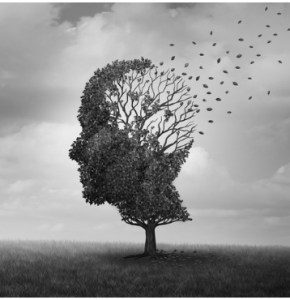Alzheimer’s Disease and Related Dementia
What is Dementia?
Dementia is not a specific disease, but rather a name for a group of symptoms caused by damage to nerve cells in the brain. Symptoms associated with dementia include a decline in memory or thinking skills, personality changes, and the inability to perform everyday activities (Idaho Health & Welfare, 2014). Alzheimer’s disease is a specific type of dementia, and there are 5.8 million Americans living with Alzheimer’s in 2019. Across the nation, Alzheimer’s is the 6th leading cause of death, and 1 in 3 seniors die with Alzheimer’s or another dementia (Alzheimer’s Association, 2019).

In 2014, Alzheimer’s was ranked 7th in Idaho as the underlying cause of death. However, if dementias had been ranked as a group, it would have been the 3rd leading cause of death in the state. Of the Idaho residents dying from Alzheimer’s and dementia, over 90% were aged 75 years and older (Idaho Health & Welfare, 2014). As baby boomers (people born between 1946 and 1964) started to turn 65 in 2011, the Idaho resident age group of 75 and older is estimated to increase by 82.4% between 2014 and 2030. Longer life expectancies and aging baby boomers are projected to impact the number of deaths from dementia significantly over the next decade (Idaho Health & Welfare, 2014).
Center Contributions
The following three reports describe the findings of assessment activities conducted to inform the Idaho Alzheimer’s Planning Group (IAPG) and others of the needs of individuals living with dementia, their caregivers, and their families across the state.
- In 2022, the Center for the Study of Aging, Boise State School of Nursing faculty, and Idaho State University School of Nursing faculty teamed up to conduct the ADRD Landscape Analysis and Needs-Based Assessment to inform the Idaho Department of Health and Welfare (IDHW) newly established ADRD program with information on Idaho’s strengths, gaps, and the direction needed to improve the state’s ADRD support. This assessment would not have been successful without the support of the students in Boise State Universities MPH capstone class, and Kathleen Mullen, a doctoral student in the School of Public Service at Boise State University.
- In 2019, Boise State graduate and undergraduate students, in partnership with the Center for the Study of Aging, conducted a 2019 ADRD Needs Assessment (PDF available upon request) to investigate the current and future long-term care needs of Idahoans living with ADRD. The objective of the 2019 Needs Assessment evaluation is to determine what needs have been met since 2012, as well as opportunities for improvement to be documented in an updated Idaho ADRD state plan.
- In 2016, students and researchers from the Center for the Study of Aging conducted an exploratory study of the impact of behavioral crises related to dementia on first responders. A PDF containing study findings is available upon request.
- In 2012, the IAPG performed a needs assessment to gather insight into the most pressing needs of those with Alzheimer’s Disease and Related Dementias (ADRD), their caregivers, and their family members; as well as the levels of satisfaction with services and information available to them. The 2012 Idaho Legislature recognized the importance of developing a statewide plan for ADRD with its support of Concurrent Resolution 112 and their endorsement of the efforts of IAPG. A PDF containing needs assessment findings is available upon request.